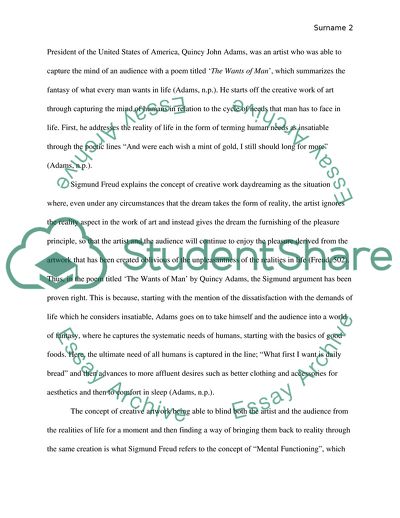Cite this document
(Artwork and Daydreaming Literature review Example | Topics and Well Written Essays - 1250 words, n.d.)
Artwork and Daydreaming Literature review Example | Topics and Well Written Essays - 1250 words. https://studentshare.org/visual-arts-film-studies/1844467-artwork-and-daydreaming
Artwork and Daydreaming Literature review Example | Topics and Well Written Essays - 1250 words. https://studentshare.org/visual-arts-film-studies/1844467-artwork-and-daydreaming
(Artwork and Daydreaming Literature Review Example | Topics and Well Written Essays - 1250 Words)
Artwork and Daydreaming Literature Review Example | Topics and Well Written Essays - 1250 Words. https://studentshare.org/visual-arts-film-studies/1844467-artwork-and-daydreaming.
Artwork and Daydreaming Literature Review Example | Topics and Well Written Essays - 1250 Words. https://studentshare.org/visual-arts-film-studies/1844467-artwork-and-daydreaming.
“Artwork and Daydreaming Literature Review Example | Topics and Well Written Essays - 1250 Words”. https://studentshare.org/visual-arts-film-studies/1844467-artwork-and-daydreaming.


